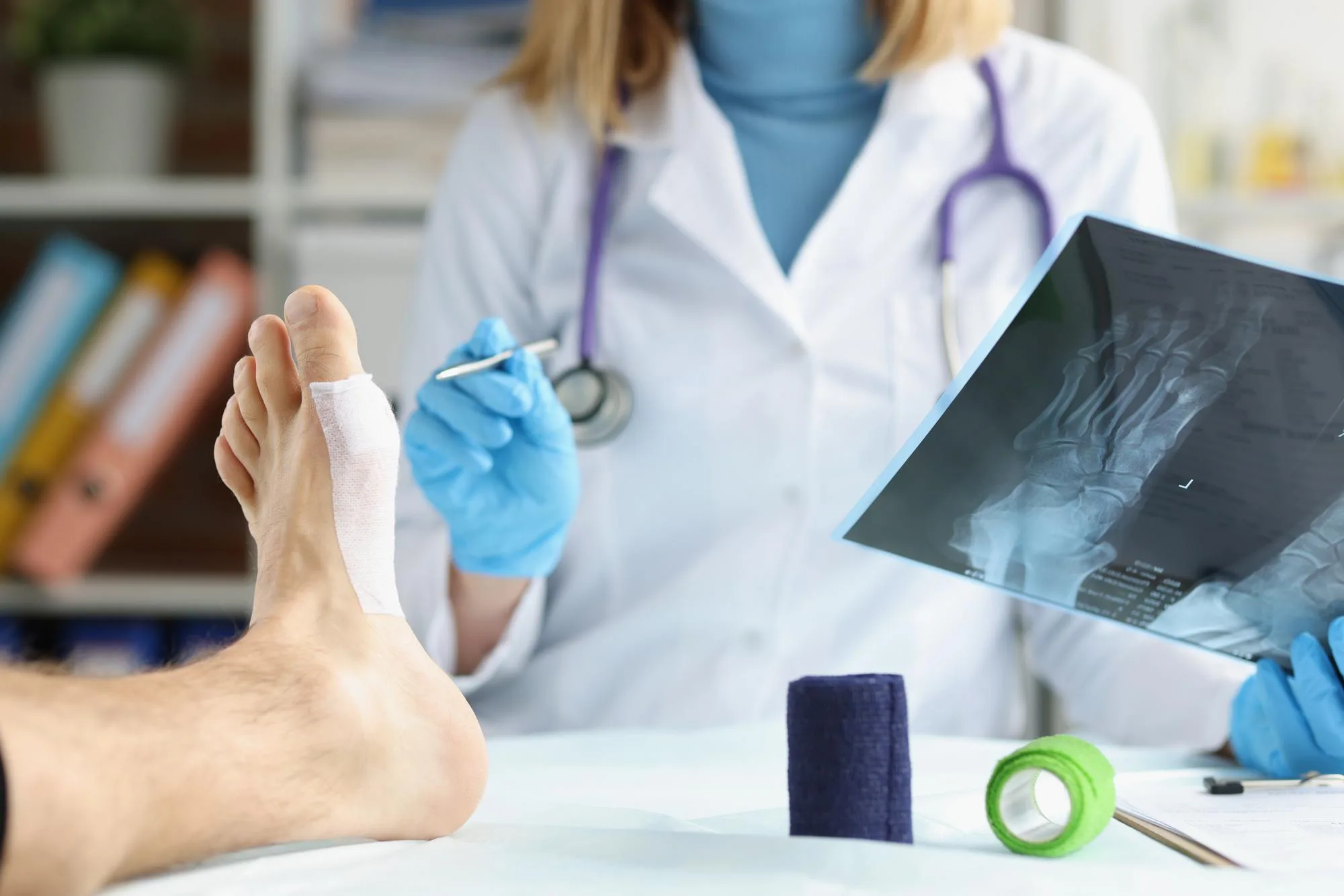
Bunions are a common foot condition characterized by a bony bump that forms at the base of the big toe. This deformity occurs when the first metatarsal bone of the foot turns outward and the big toe points towards the other toes, causing the joint to protrude. While some people may not experience symptoms, others experience pain, swelling, and difficulty walking. Effective treatment of bunions is available, however, to alleviate discomfort and prevent further complications.
Understanding Bunions
Bunions, medically known as hallux valgus, are more than just a cosmetic issue. They can lead to significant pain and impair mobility. Several factors contribute to the development of bunions, including genetic predisposition, improper footwear (especially high heels or narrow-toed shoes), and certain foot structures and conditions like flat feet. Early intervention can help people manage symptoms and slow the progression of the condition.
Non-Surgical Treatments
For many people, non-surgical treatments can effectively manage bunion symptoms and improve quality of life.
Proper Footwear: Choosing shoes with a wide toe box and avoiding high heels can relieve pressure on the bunion and provide comfort. Shoes should be supportive and fit well to minimize further deformation.
Orthotic Devices: Custom orthotic devices can help redistribute pressure away from the bunion and correct underlying biomechanical issues. These can be inserts for your shoes or padding specifically designed to cushion the bunion and reduce pain.
Medications: Over-the-counter pain relievers such as ibuprofen and acetaminophen can help lessen the pain and inflammation associated with bunions. In more severe cases, a doctor might prescribe stronger medication.
Physical Therapy: Exercises that strengthen the foot and improve flexibility can help maintain joint mobility and reduce discomfort. Physical therapists can also teach techniques to better manage daily activities without exacerbating the bunion.
Splints and Braces: Wearing a bunion splint or brace at night can help realign the big toe, alleviating pressure and pain. These devices are not a cure but can provide temporary relief, especially during sleep.
Surgical Treatments
When non-surgical options don’t provide relief or the bunion causes severe pain and functional impairment, surgery may be necessary. Surgical treatment aims to realign the bones, ligaments, tendons, and nerves so the big toe can be brought back to its correct position. There are several types of bunion surgeries, depending on the severity and the specific anatomy of the foot. Common procedures include the following:
Osteotomy: This involves cutting and realigning the joint to correct the deformity. The bones are fixed with screws or plates to hold them in the new position.
Arthrodesis: For severe bunions or when arthritis complicates the bunion, arthrodesis may be performed. This procedure fuses the bones of the affected joint permanently.
Exostectomy: Although less common, this involves removing the protruding part of the bone without realigning the toe. It is usually not recommended as a standalone treatment since it does not correct the misalignment.
Preventive Measures and Recovery
To prevent bunions or stop them from worsening, wear appropriate footwear, avoid stress on the feet, and maintain a healthy weight. After any treatment, particularly surgery, follow your doctor’s instructions carefully to ensure proper healing. Recovery may involve rest, ice, compression, and elevation (RICE), along with physical therapy to restore strength and mobility.
While bunions can be a source of discomfort, a combination of conservative treatment and lifestyle adjustments can often help people manage symptoms effectively. In cases where pain and deformity are severe, surgical intervention may provide a long-term solution. Regardless of the treatment path, addressing bunions early can lead to better outcomes and improved overall foot health.
Resource Links
“Bunions” via Mayo Clinic
“Bunions (Hallux Valgus)” via Cleveland Clinic
“What to Do About Bunions” via Harvard Health Publishing

